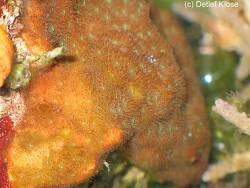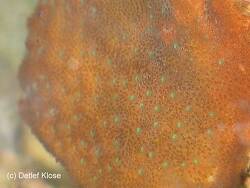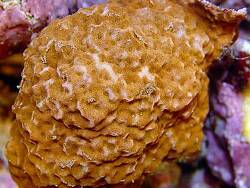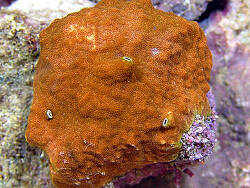Info
Gardiner, 1898
Similar Species: Psammocora superficialis, which has less distinctive corallites with distinctly petaloid primary septo-costae. See also P. haimeana.
Water parameters:
Trace elements, (calcium 420-440 mg/L, magnesium 1100-1300 mg/L, KH below 8, strontium 8 mg/L). Water changes: at least 5% a week or 10% a month.
Water quality:
Permanently stable and clear water if possible, if necessary carbon filtration or ozonation is advisable to remove yellow substances.
The bucket comparison (white containers of the same size, in one freshly prepared water, in the other aquarium water) will quickly show you if your water in the aquarium is as clear as fresh water.
Acropora stony corals do not like to stand in a yellow broth.
Nitrate NO3:
Less than 5 mg/L.
Phosphate PO4:
Less than 0.1 mg/L better even in the range of 0.01 mg/L.
All the mentioned stony corals can be propagated by fragmentation.
Let's not forget the aspect of animal - and environmental protection that all coral breeders do by now.
The more offshoots, the less removals in nature.
Whereby also there in the years much has done.
So today corals from aquaculture are offered preferentially and sold as offspring.
Hint:
Strongly branched colonies and very variable in color.
Beside the color also the appearance is already very different.







 Dr. John Edward Norwood "Charlie" Veron, Australien, Australien
Dr. John Edward Norwood "Charlie" Veron, Australien, Australien



















